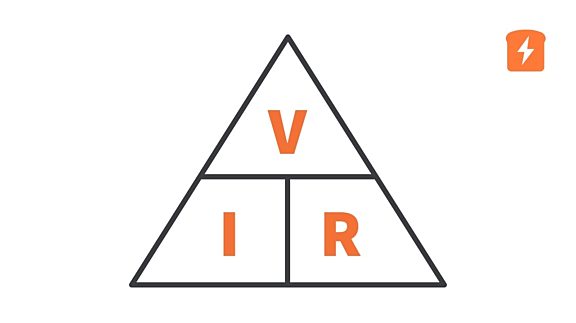What are Branches, Nodes, and Loops with Series and Parallel Components?
Published
Every step in the learning process is necessary to build the foundation for the next step. In some cases, that’s more true than other times. In this case, this is doubly the case, as many things we discuss today won’t be directly applicable to solving circuits but will be absolutely foundational in understanding the structure of circuits, arguably the first step in solving a circuit. So maybe I contradict myself. But with time, this will be so natural it won’t even be a conscious step.
The first part of a circuit we’re going to discuss are branches. A branch is a generic term that represents a single element in the circuit. This could be a voltage source, resistor, capacitor, inductor, or more. It covers any two-terminal element. More complicated devices, such as op-amps or microcontrollers do not fit under the term “branch” but it’s okay, we won’t be dealing with anything that complicated for awhile.

The second part of a circuit is a node. This is the connection point between two or more branches. A good way to think of it may be a junction where currents are flowing in and out depending on the different branches. Nodes are an essential part of circuit analysis and design, so let’s look at a couple examples of what nodes are:

Finally, the last part of a circuit that is important to us at the moment is a loop. A loop is a closed path in a circuit. Closed path means that it starts at a node, passes through other nodes, and finishes at the same node without passing through any other node twice. Note that the definition is flexible in that you can include more nodes or exclude nodes, as long as you don’t pass through the same node twice, other than the starting/finishing node. Let’s look at an example of the same circuit and two different loops that overlap.

This is important because when doing circuit analysis, you have the benefit of being able to choose your loops to best fit the situation but has the drawback of being a little more complicated in that you need to make sure your loops make sense both mathematically and in conjunction with each other. With great flexibility comes great responsibility.
Now that we’ve gone over these terms and, specifically, know what nodes are, we can talk about branches in series and parallel and what their differences are.
Series and Parallel
A branch, or a two-terminal element, is in series with one or more other branches when they exclusively share a single node and carry the same amount of current. They typically look like they’re connected sequentially, one after another, like they’re a chain. The best way to describe this is probably with a few images. We'll use resistors as an example, something our Friend of CircuitBread, Ohmite, is famous for.

As you can see in the first image, there are two branches, both resistors, and there is a node between them that is exclusive to those two branches. Thus, any current that flows through one resistor is going to flow through the other.
In the second image, there are three branches, two resistors on top and one resistor on the bottom. This is a more complicated example in that there is a single node that all three branches are connected to. If you look at it in one way, grouping the top two resistors, then the top two resistors are in series with the bottom resistor. Any current that flows through those top resistors will flow through the bottom resistor, so both those top resistors are in series with the bottom resistor. It’s important to note that just one of those resistors on the top is not in series with the bottom resistor, it’s that both of those resistors on top are in series with the single resistor below.
For branches to be in parallel, it’s when two or more two-terminal elements are connected to the same two nodes. In this case, it doesn’t matter if other things are connected to either of those nodes - as long as the two-terminal elements have both elements connected to the same nodes, they’re in parallel. While the series devices have the same current through them, parallel devices have the same voltage across them. Once again, some images will hopefully help.

As you can easily see in the first and second image, these branches, once again represented by resistors, share both sides of their nodes. In the second image, even though there are more branches, all of them share the same two nodes, so they are all in parallel. The third image makes things a bit more complicated, though. There are two resistors in series and those two resistors in series are in parallel with the single resistor. Sometimes complex arrays of resistors or any other branches can be easily simplified if you can recognize things like that.
Before we get too excited, we do need to remember that not everything is in series or parallel, but it does crop up often enough that you not only should but almost certainly will become a natural at identifying and gaining insights from series and parallel circuits.
Besides knowing that series branches share current and parallel branches have the same voltage across them, one of the big reasons parallel and series components are important is because you can typically simplify them. Let’s go over how to do this and I’d like to state that this is only applicable to resistors, though the principles will transfer quite nicely to other components later.
To simplify series resistors, simply add them together. It’s very simple and painless. It also makes sense - if the electricity has to first flow through one resistor and then another, it has to push its way through the resistance of both of them. Let’s look at some really quick samples.

We always recommend doing practical experiments when learning, as it helps things settle in. Ohmite is known for their power resistors which are definitely overkill for these examples (though they're fun to check out!) but you may want to get some Little Rebel resistors that are excellent resistors but much, much less expensive than the big power resistors. If you're able, I recommend snagging a few different values and trying these circuits out with an inexpensive multimeter or ohmmeter.
Simplifying parallel resistors is a little more complicated but still straightforward and there are even cases where the steps can be simplified even further. In general, to calculate the equivalent resistance of parallel resistors, you simply use this equation:


Little Rebel Resistors
High-quality but inexpensive resistors from Ohmite that you can use to test these concepts with a breadboard.
FROM Ohmite
This is extremely easy if you have a calculator and we have a tool that makes it even easier but the most common mistake we see is forgetting to invert the sum, basically forgetting the left hand of the equation. Make sure that you don’t skip that step! However, the most important thing is to get an intuitive feel for it. One thing you should realize is that resistors in parallel will create an equivalent resistance less than the resistance of the smallest resistor. And the more resistors you put in parallel, the lower the overall resistance.
There are two cases in which you can simplify this equation. The case is when you only have two resistors. Then, the equation simplifies to:

The last case is if the two resistors are equal resistance, then the equivalent resistance is half of the two resistors. You can put any number in either equation and prove that to yourself, if you’re the untrusting type.

Summary of Branches, Nodes, and Loops with Series and Parallel Components
We’re now one step closer to being able to analyze existing circuits and design our own! We’ve learned a few important terms about electronic circuits and now can identify branches, nodes, and loops. We used our knowledge of branches and nodes to learn about series circuits and parallel circuits, how to identify them, and how to simplify them. We will use our knowledge of loops soon when we learn about Kirchhoff’s Current and Voltage Laws (KCL and KVL respectively), two large pieces of circuit analysis that will open up a huge treasure chest of tools for your electronics arsenal. One last thing before we learn about KCL and KVL, however, is learning about different power sources in our next tutorial.

Get the latest tools and tutorials, fresh from the toaster.







